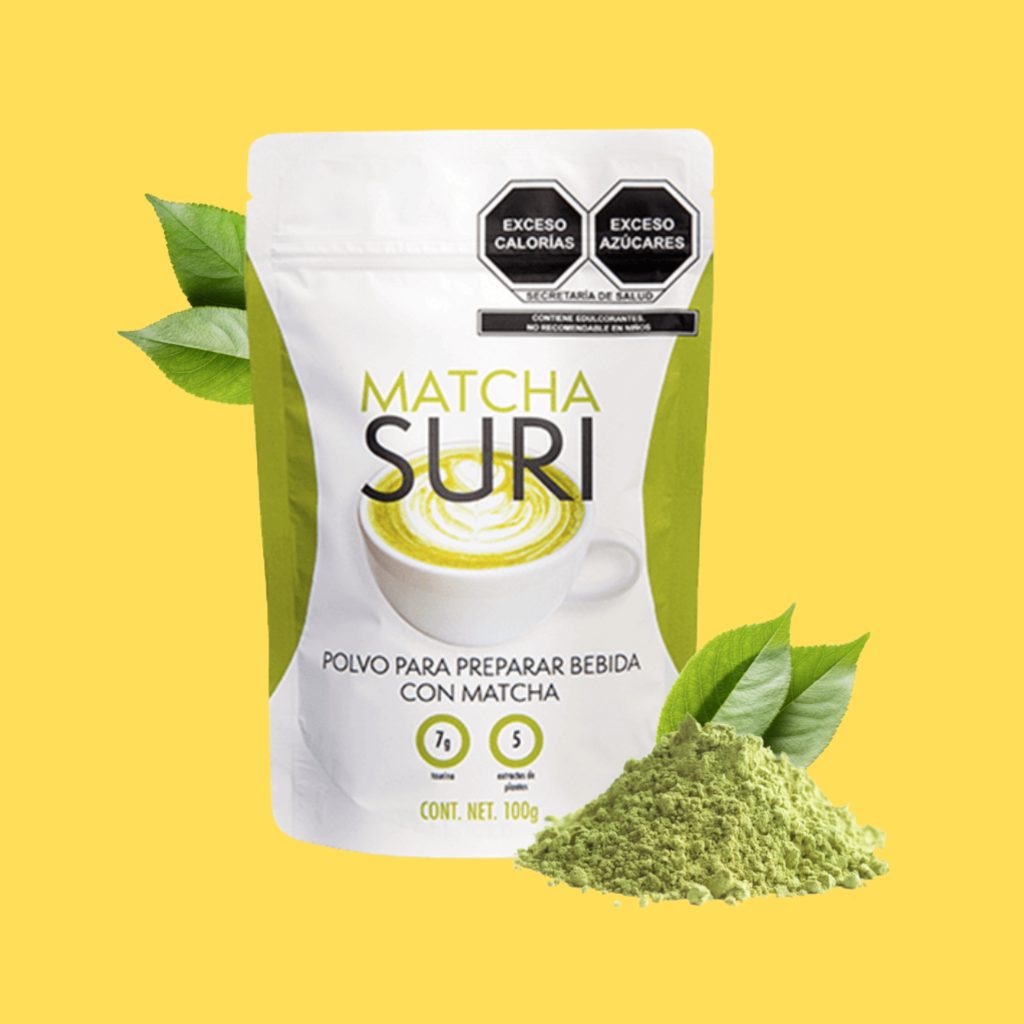A bowl of vibrant Matcha Suri green tea powder with a bamboo whisk. Matcha Suri is a specialized green tea drink mix based on matcha (finely ground green tea) that promises a range of wellness effects. Matcha itself is celebrated for high levels of antioxidants and nutrients, and the Matcha Suri product combines pure matcha leaf powder with additional natural compounds designed to “enhance metabolic functions”.
In this comprehensive guide we’ll cover all things Matcha Suri, including its primary health benefits, usage and recipes, skin-care advantages, and how it differs from plain matcha. By the end, you’ll understand why the phrase “matcha suri health benefits” is drawing attention, and how to incorporate this nutrient-rich green tea mix into your routine.
Many people are now discovering Matcha Suri health benefits as a natural way to boost energy and detoxify the body
🌿 To explore more about Matcha Suri health benefits, click here for a detailed overview.
What Is Matcha Suri?
Matcha Suri is marketed as a 100% organic matcha green tea drink mix. According to the manufacturers, it is literally made from stone-ground matcha leaves (“finely stone-ground Matcha tea leaves”) plus a blend of natural additives. In other words, the core is real matcha powder (shade-grown green tea) infused with other ingredients like spirulina extract, natural sweeteners, and botanical extracts.
The product description emphasizes its “potent compounds designed to enhance metabolic functions” and a “robust taste profile”. Its formula includes things like taurine, citric acid, and marshmallow root extract, alongside maltodextrin and fructose as natural sweeteners. In practical terms, you prepare Matcha Suri by mixing the bright green powder with hot water (or milk) and whisking it into a tea or latte, much like traditional matcha.
According to the official product information, Matcha Suri offers “extensive wellness advantages”: it burns body fat, detoxifies the body, and leaves skin radiant with lasting energy.
In fact, one site says Matcha Suri’s usage “is not only efficient at burning fat but also purifies your system, leading to radiant skin and a lasting supply of vitality”. Reviews echo this, noting the powder provides a “delicious and natural source of energy, as well as antioxidants and vitamins”.
In summary, Matcha Suri is essentially a matcha-based health drink supplement, formulated to support metabolism, energy, and skin health. We will now examine the science behind these claims.
Key Health Benefits of Matcha Suri
At its core, Matcha Suri delivers all the nutrients of pure matcha tea – plus extras. Research on matcha and green tea explains most of the health perks. Importantly, matcha is exceptionally rich in antioxidants (especially the catechin EGCG) because you consume the whole leaf. In fact, matcha has 3–10 times more catechins and EGCG than regular brewed green tea.
These powerful polyphenols scavenge free radicals in the body, fighting inflammation and protecting cells from damage. Health studies link green tea’s catechins to liver protection, reduced blood sugar, and even anti-cancer effects. This means Matcha Suri – being matcha-based – is antioxidant-dense, supporting overall health.
Among the most talked-about Matcha Suri health benefits are its effects on metabolism and mental clarity.
Other evidence-based matcha advantages include:
- Boosted Metabolism and Weight Loss: Matcha Suri is promoted as a metabolism booster, and research supports green tea’s role in fat burning. A 2020 review found that green tea extract can aid weight management – for example, 500 mg/day of green tea catechins for 12 weeks significantly reduced body mass index (BMI) in participants. EGCG is thought to stimulate thermogenesis (fat burning) in the liver. Many users report appetite control and gradual weight loss with regular matcha-based drinks. In practice, using Matcha Suri as a healthy drink (instead of sugary beverages) can support a calorie-controlled diet and boost fat metabolism.
- Sustained Energy & Mental Focus: Unlike coffee’s quick jolt, matcha contains moderate caffeine plus L-theanine, an amino acid that promotes calm alertness. Matcha typically has more caffeine per cup than steeped green tea, but thanks to L-theanine the energy is steady and less jittery. Studies show matcha drinkers feel more alert, focused, and have better memory/attention than placebo. The user reviews for Matcha Suri note a “burst of green tea goodness” and increased focus throughout the day. In short, expect a gentle energy lift without a crash, ideal for work or study.
- Heart and Cardiovascular Health: Green tea flavonoids benefit heart health by improving cholesterol and blood pressure. Epidemiological studies associate daily green tea intake with lower risk of cardiovascular disease. Matcha’s concentrated nutrients can enhance these effects. For example, regular green tea has been shown to lower LDL cholesterol and raise HDL. While no research on Matcha Suri itself exists, its matcha content suggests similar cardio-protective effects.
- Antioxidant & Detox Support: Matcha’s potent antioxidants help the body’s natural detox processes. Many Matcha Suri marketing points highlight “detoxifying” properties. These likely come from polyphenols (EGCG and others) that support liver enzymes and eliminate toxins. Matcha also contains chlorophyll (from the tea leaves) which has mild detox effects. Thus, an everyday matcha drink can help purge environmental toxins and metabolic waste.
- Immune Boost: Green tea catechins have antimicrobial and immune-modulating effects. While not unique to Matcha Suri, those drinking it may enjoy improved resistance to common bugs. Matcha also contains small amounts of vitamins (vitamin C, B2, E) and minerals that support immunity.
- Digestive Health: Some users report that matcha helps regulate digestion. The dietary fiber from matcha leaves may gently stimulate peristalsis. Plus, the hydration from tea and natural compounds in green tea might ease gastrointestinal transit. (Note: individual results vary, and very high doses of green tea can irritate the stomach.)
Overall, Matcha Suri’s health benefits are mainly the same as matcha’s proven benefits: high antioxidants to combat inflammation, support for liver and metabolic health, gentle caffeine boost, and cardiovascular support. The added ingredients (like spirulina) could contribute extra nutrients (see skin section below). But the core is matcha-derived polyphenols and caffeine, which science has shown to be health-promoting.When exploring natural wellness trends, the growing interest in Matcha Suri health benefits stands out globally.
✅ Discover the full range of Matcha Suri health benefits, including how it can support your metabolism, skin, and energy levels.
Matcha Suri Benefits for Skin
One standout promise of Matcha Suri is beauty from within. Drinking matcha can improve skin health, and Matcha Suri goes further by adding skin-friendly nutrients. Research indicates matcha’s EGCG and catechins have potent anti-inflammatory and antioxidant effects on the skin. For example, EGCG helps “reactivate the reproduction process of skin cells” giving a healthy glow. Studies also show matcha’s antioxidants can protect the skin from UV damage and pollution by neutralizing free radicals. In practice, this means regular matcha intake may slow photoaging (sun-related aging) and preserve collagen.
Matcha’s polyphenols also help oily or acne-prone skin. One skincare review notes that matcha’s catechins can “help break down your bacterial membranes” in the skin and reduce inflammation. This antimicrobial effect can clear blemishes naturally. Matcha powder is a rich source of Vitamin E and B2 – both associated with improved skin health. These vitamins contribute to skin repair and radiance. Additionally, Matcha Suri contains spirulina algae extract, which brings extra skin benefits. Spirulina’s nutrients (vitamins A, C, E, and minerals) support collagen production and healthy aging. In short, spirulina adds an extra antioxidant boost that may firm skin and reduce wrinkles.
Putting this together, the “benefits for skin” from Matcha Suri include:
- Clearer Complexion: Antioxidants and detoxifiers in matcha help purge toxins and reduce acne-causing bacteria. Many users find their skin appears more clear and less oily over time.
- Anti-Aging & Firming: EGCG stimulates collagen and elastin at the dermal level[21], potentially reducing fine lines. The matcha’s antioxidants guard against UV/free-radical damage, slowing wrinkles and age spots. Spirulina’s antioxidants further aid collagen health.
- Even Tone & Glow: By repairing skin cells and reducing inflammation, matcha can diminish redness and dark spots. Studies note EGCG can help fade hyperpigmentation. Users often report a “radiant” glow after regular matcha consumption.
- Hydration and Nourishment: Matcha provides hydration plus micronutrients (B-vitamins, magnesium) that nourish the skin from inside.
- Soothing Irritation: The anti-inflammatory nature of both matcha and spirulina can calm redness, eczema or psoriasis flare-ups. Some research even suggests matcha compounds reduce psoriasis lesions.
In short, Matcha Suri acts like a “beauty tea,” flooding your body with antioxidants and nutrients that benefit skin health. Scientific sources back these effects: matcha’s polyphenols are 3–137 times higher than normal green tea for skin defense, and spirulina is known to boost collagen. The product claims “clear skin” and “radiant skin” are consistent with what matcha’s nutrients can deliver. For maximum benefit, drink Matcha Suri regularly and maintain a healthy diet; over weeks you should notice improvements in hydration, clarity and smoothness.
Matcha Suri vs. Traditional Matcha Tea
Matcha tea (plain matcha powder) is simply ground green tea leaves, with nothing added. By contrast, Matcha Suri is a blended mix containing matcha plus other ingredients. The key differences are:
- Ingredients: Traditional matcha contains only tea leaf powder. Matcha Suri lists natural sweeteners (maltodextrin, fructose), taurine, citrus and plant extracts, plus spirulina and marshmallow root. These add flavor, fiber, and extra nutrients. In effect, Matcha Suri is less “pure” but more of a nutrition supplement. The added carbs mean Matcha Suri has more calories and a sweeter taste than unsweetened matcha.
- Taste Profile: Pure matcha has a strong earthy, vegetal flavor that some find bitter. Matcha Suri’s formula is designed for a “robust taste” – it comes sweeter and creamier because of the added sugars and flavorings. If you prefer a lightly sweet, latte-like drink, Matcha Suri may be easier to sip. Traditional matcha lovers who enjoy bitterness might find matcha suri less potent in flavor but still satisfying.
- Nutrient Content: While both contain green tea catechins, the concentration differs. A teaspoon of ceremonial matcha provides about 34 mg of caffeine and 2.6 grams of catechins. Matcha Suri’s nutrients per scoop are lower in tea content (since it’s mixed). However, Matcha Suri adds vitamins and fiber (from spirulina and other extracts) not present in plain matcha. The downside is it also has added sugar (even if natural), whereas matcha itself has zero sugar.
- Preparation: Both are prepared similarly (see next section). However, because of its sugars and thickening agents, Matcha Suri may dissolve differently (a little more stirring).
- Health Focus: Pure matcha is prized as a traditional health tonic. Matcha Suri is marketed specifically for weight loss and detox. For example, Matcha Suri packaging highlights fat-burning and detox functions, whereas green tea companies usually focus on longevity and heart health. Still, the underlying health benefits come from the same matcha nutrients. If you want the essence of green tea without additives, pure matcha is best. If you want a convenient mixed supplement, matcha suri delivers similar antioxidants plus extra ingredients in one scoop.
Several studies highlight Matcha Suri health benefits in supporting weight loss and skin rejuvenation.In summary, Matcha Suri is not a superior matcha – it’s a different product. It should be seen as a dietary supplement derived from matcha, not a ceremonial matcha tea. If you enjoy matcha and don’t mind sweeteners, Matcha Suri offers a flavored, enriched alternative. Otherwise, you can get many matcha benefits from plain green tea or matcha powder (which some sources say has even higher EGCG content per gram than blended products).
📘 Learn about the science-backed Matcha Suri health benefits in our full guide.
How to Make Matcha Suri Powder at Home
If you’re inspired to DIY a matcha suri-style mix, it’s possible but challenging to exactly replicate the brand. True matcha requires special shaded tea leaves and stone grinding. However, you can make a homemade version using quality ingredients:
- Start with high-quality green tea leaves or matcha. For the best powder, use young shaded green tea leaves (you can purchase ceremonial-grade matcha powder). If using loose tea leaves, dry them thoroughly. Health experts note that authentic matcha is made by grinding steamed, vein-free leaves into an ultra-fine powder. A home coffee grinder or spice grinder can get you a coarse powder, but true matcha fineness is hard to achieve without a stone mill.
- Grind the leaves (optional). If you have whole leaves, grind them to a fine powder. The goal is a texture like flour. Even a clean kitchen blender or spice mill can do a pass. (Be cautious: very fine grinding can heat the leaves, which may slightly change the taste.) Because stone grinding is impractical at home, many DIYers simply buy ceremonial-grade matcha and skip this step.
- Add complementary ingredients. To mimic Matcha Suri’s formula, mix in some of the listed components. For example, add a pinch of natural sweetener (like pure fructose powder or maltodextrin) for energy and taste. Consider a small amount of spirulina or moringa powder (for extra nutrients), and a tiny bit of citric acid (for tang). Marshmallow root or grapefruit seed extracts (dried powders) can add detoxifying plant compounds. Of course, these extras are optional — they make the mix richer but aren’t strictly necessary. Always measure carefully so you don’t oversweeten or make the mix gritty.
- Mix well and store. Combine your ground matcha with the additives in a clean, dry container. Stir or shake thoroughly to evenly distribute everything. A mason jar works well. Label it “Matcha SurI–style mix”. Store in a cool, dry place.
- Brew as you would matcha. Use about 1–2 teaspoons (2–4 grams) of your homemade mix per serving. Sift it into a bowl or cup (this removes lumps). Add roughly 2 ounces (around 60 ml) of hot water (not boiling) and whisk vigorously in a zigzag motion until frothy. This is the traditional Japanese matcha tea method. If your mix contains sweetener, taste it first; you may use a bit less water or add a sweetener of choice to suit your palate.
By following these steps, you’ll have a green tea powder drink similar to Matcha Suri. It may not taste exactly the same, but you’ll get a nutrient-packed beverage. If you lack certain ingredients, you can still enjoy plain matcha tea: simply blend matcha powder with a small amount of honey or lemon for flavor, and whisk with water.
Traditional and Creative Matcha Suri Recipes
Once your Matcha Suri (or homemade equivalent) is ready, there are many ways to enjoy it:
- Classic Hot Tea (Usucha): Sift 1–2 tsp of matcha/suri powder into a bowl. Pour ~2 oz of 175°F (80°C) water and whisk briskly with a bamboo whisk (chasen) until a green froth forms. Drink immediately for a smooth, earthy beverage. Add more water for a thinner brew.
- Matcha Latte: Heat milk (dairy or plant-based) and whisk in 1–2 tsp of powder. This makes a creamy, foamy matcha latte. Top with a sprinkle of cinnamon or vanilla extract for flavor. You can also make an iced latte by chilling the tea first or pouring over ice.
- Smoothies: Blend matcha suri into a fruit smoothie for a nutritious boost. Healthline suggests you “try whipping up protein smoothies” with matcha. A popular combo is banana, almond milk, protein powder, and matcha powder. The green hue and nutrition make it a great recovery drink.
- Desserts & Bakes: Add the powder to pancake batter, yogurt, chia pudding, or cookies. Matcha-swirled ice cream and matcha brownies are delicious. The recipe ideas include mixing matcha “into milk-based foods and drinks, such as lattes or rice pudding” and even into sweets like ice cream or cookies. Be mindful that heat can dull some antioxidants, but it still adds flavor and color.
- Savory Uses: In modern cooking, matcha can spice up dishes. Try stirring a pinch into salad dressings, guacamole, or sushi rice. The earthy bitterness pairs well with cream or umami flavors.
For each use, adjust the amount to taste. Matcha is strong, so start with small amounts (½–1 tsp) if you’re unsure. Overall, Matcha Suri’s versatility means you can enjoy its benefits morning or night – in tea, lattes, or food – without getting bored. Its fine powder mixes easily into any recipe.
Matcha Suri vs. Matcha Tea: Key Differences
Matcha (traditional green tea powder) is an ancient Japanese tea prepared in a tea ceremony, using just ground tea leaves and water. It has no calories, sugar, or additives. Drinking ceremonial matcha (or culinary-grade matcha) delivers pure green tea benefits and a bitter, vegetal taste.
By comparison, Matcha Suri is more like a nutritional supplement in powdered form. Its differences are:
- Sweeteners & Flavor: Matcha Suri contains added natural sugars (maltodextrin, fructose) and flavor extracts. This makes it sweeter and more palatable for many people. Plain matcha, by contrast, tastes bitter and grassy unless you sweeten it yourself.
- Added Nutrients: Matcha Suri adds ingredients like spirulina, marshmallow root, taurine, etc.. These can contribute vitamins, fiber and other compounds not in matcha alone. For example, spirulina adds plant protein and a variety of minerals. Marshmallow root provides polysaccharides that may soothe digestion. Traditional matcha has no extras.
- Calorie Content: Because of the sugars and binders, Matcha Suri has more calories per serving than plain matcha. If your goal is calorie-free tea, regular matcha is lighter (aside from its 2 calories per gram from the tea leaf itself).
- Caffeine/Energy: Matcha Suri still contains matcha’s caffeine, but the overall blend may dilute it slightly per scoop. In practice the boost is similar: you still get a noticeable energy lift from either product.
- Preparation: Both powders are prepared by whisking into water or milk. The method is essentially identical (as shown above).
In short, think of traditional matcha as a pure green tea beverage, whereas Matcha Suri is a blended green-tea-based energy mix. Both promote wellness, but Matcha Suri is formulated with extra components for specific effects (weight management, skin health). Your preference depends on whether you want 100% natural tea (matcha) or a flavored supplement (Matcha Suri).
☕ Interested in trying it yourself? Check out this source to explore real Matcha Suri health benefits and user reviews.
How to Enjoy Matcha Suri (Traditional Recipes)
To fully experience Matcha Suri, use it just like matcha tea. A traditional matcha preparation (called usucha) is:
- Sift about 1–2 teaspoons of Matcha Suri powder into a matcha bowl or cup (this prevents clumps).
- Pour 60–100 ml hot water (around 175°F/80°C) over the powder.
- Whisk briskly in a zigzag (M or W) motion with a bamboo whisk. Continue until the surface is uniformly frothy.
- Serve immediately and enjoy the vibrant green froth. Add a hot tea spoon of steamed milk for a latte if desired.
Healthline notes that traditional matcha is prepared exactly this way. You can also follow that method with Matcha Suri – it will result in a smooth, rich tea. If you prefer cold drinks, whisk the powder with a small amount of hot water first, then pour over ice and top with milk.
For a modern twist, try any of the uses below (some inspired by Healthline’s matcha recipe ideas):
- Matcha Smoothie: Blend the powder into a green smoothie with banana, yogurt and honey.
- Matcha Chia Pudding: Stir Matcha Suri into overnight oats or chia pudding for a nutritional breakfast.
- Matcha Baked Treats: Add a teaspoon to pancake batter, bread loaf, or cookies for a green accent.
- Matcha Face Mask (DIY): Though not consuming, you can also mix a pinch of matcha with yogurt or honey and apply it topically as a face mask – its antioxidants are good for skin both inside and out.
No matter the recipe, always start with the right powder-to-liquid ratio and adjust sweetness to your taste. The rich green color of matcha enhances the visual appeal of foods and drinks, which is an added bonus for making your routine feel special.
🔍 If you’re curious about how it compares to other green teas, read more about Matcha Suri health benefits here.
Conclusion
Matcha Suri is a metabolism-boosting, antioxidant-rich green tea mix that combines the benefits of matcha with added superfood ingredients. Its top advertised advantages – burning fat, detoxifying the body, and giving “clear skin” rest on solid nutritional foundations. As we’ve seen, matcha (the base of Matcha Suri) offers heart health, brain support, cancer-fighting catechins, and potent anti-aging effects. The spirulina and botanicals in Matcha Suri further enhance its nutrient profile, especially for skin and vitality.
In practice, enjoying a daily cup of Matcha Suri (prepared as a tea, latte or smoothie) can be a delightful way to boost antioxidants and energy. Its sweet, earthy flavor makes it easy to drink, while delivering matcha’s known benefits. Just remember: it is still a supplement, not a magic cure. A balanced diet, exercise, and healthy sleep are also key to wellness.
We encourage you to try Matcha Suri (or high-quality matcha) and experience its effects firsthand. Share this guide on social media to spread the word, and tell us your thoughts in the comments below – have you noticed improvements in your focus, complexion or metabolism from drinking matcha? Your questions and feedback help everyone learn more about the true “matcha suri health benefits.”
📘 Looking for more ways to boost your health naturally? Don’t miss out — check out Cures Boost today!
FAQs
Q: What are the main health benefits of Matcha Suri?
A: Matcha Suri delivers all the benefits of matcha tea – high antioxidants (EGCG), steady energy, and metabolic boost – plus extras from its added ingredients. Regular consumption may support fat burning and weight management, improve focus (caffeine + L-theanine), protect heart and liver (polyphenols), and provide nutrients (vitamins, minerals) that overall promote health. Its antioxidant content fights inflammation and may even help prevent chronic disease. In short, it’s a nutrient-rich drink mix designed to enhance vitality and well-being.
Q: How do I prepare Matcha Suri at home?
A: Preparing Matcha Suri is the same as traditional matcha tea. Sift 1–2 teaspoons of powder into a cup, add about 2 ounces of hot (but not boiling) water, and whisk briskly until frothy. You can adjust for more liquid if you prefer a milder tea or make a latte with steamed milk. For an iced version, simply cool it down or pour over ice. If you mixed your own matcha suri-like powder, prepare it identically. The key is fully dissolving the powder (sifting helps) and using enough whisking to evenly disperse it.
Q: Can I make Matcha Suri from scratch?
A: You can attempt a DIY blend by grinding matcha-grade green tea leaves and adding ingredients like spirulina, natural sweetener, and herbal extracts (citric acid, marshmallow root, etc.) similar to the official formula. However, creating authentic matcha leaf powder requires special stone grinding, so many people simply buy quality matcha powder. If you do make a homemade mix, remember to store it airtight and use it just as you would matcha in drinks.
Q: How is Matcha Suri different from regular matcha tea?
A: Traditional matcha is 100% pure powdered green tea. Matcha Suri, on the other hand, is a blended supplement – it adds sugars, powders, and extracts to matcha. This means Matcha Suri is sweeter and slightly higher in carbs than plain matcha, and contains extras like spirulina that regular matcha doesn’t. Both share matcha’s benefits (antioxidants, caffeine), but Matcha Suri is specifically formulated for added “weight-loss and skin” effects. Think of it as a pre-mixed matcha drink mix, whereas plain matcha is just tea.
Q: Is Matcha Suri good for weight loss?
A: Matcha Suri contains the same active green tea components that have been linked to fat loss. Studies have found green tea extracts can modestly improve weight loss and metabolism[12]. The product’s added ingredients (like fiber from spirulina) and its low calorie content (vs. sugary drinks) may help as well. Users often report reduced appetite and increased energy. However, it’s not a magic pill – combining Matcha Suri with a healthy diet and exercise is the most effective approach.
Q: Can Matcha Suri improve skin health?
A: Yes. Matcha’s antioxidants and anti-inflammatory compounds support skin health from the inside. They help clear acne bacteria, boost collagen, and protect against environmental damage. Plus, Matcha Suri’s spirulina extract provides additional vitamins that aid in skin repair. Many drinkers find their complexion looks brighter and more even after regular consumption. For best results, use it daily as part of a skincare-friendly diet.
Q: Any precautions when using Matcha Suri?
A: Matcha Suri is generally safe due to its natural ingredients. However, it does contain caffeine (though less than coffee), so avoid taking it too late at night to prevent insomnia. Also, it has added sweeteners; if you have blood sugar concerns, be mindful of your portion size. As with any supplement, follow the recommended daily dosage on the label. Pregnant or nursing women, o
r people on medication, should consult a doctor before adding new supplements.Q: Where can I buy Matcha Suri?
A: Matcha Suri is available online (as shown in our sources) and at select retailers. Look for reputable retailers or the official website to ensure you get the authentic product. If you can’t find it, using a high-quality ceremonial matcha and adding a teaspoon of spirulina is a close homemade alternative.
🌱 Want more natural health tips and wellness guides? Visit Cures Boost for daily updates.








11 thoughts on “Matcha Suri Health Benefits: A Complete Guide to This Green Tea Mix”